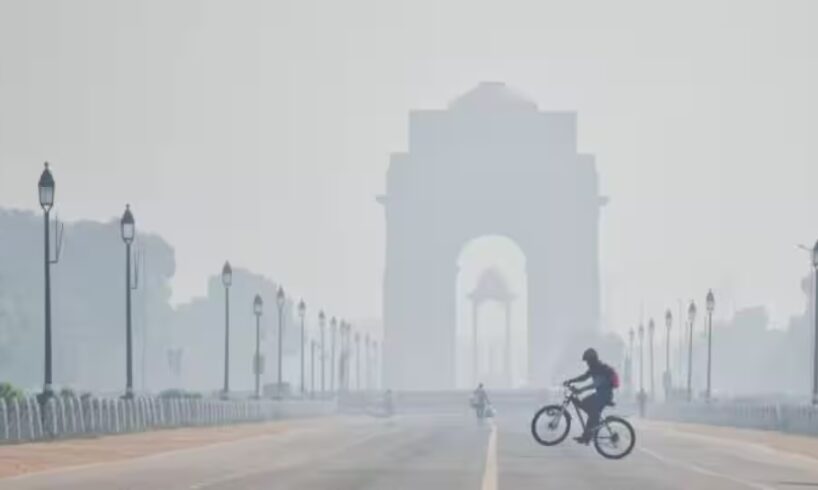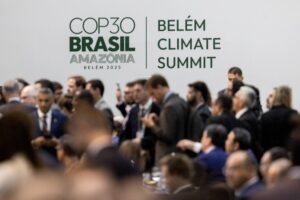
Delhi Air Pollution: The Air Quality Index (AQI) of thenational capital peaked at a hazardous 764 around on November 13. Beijing, in comparison, reached 236 on November 5, with an annual average AQI of 77 versus Delhi’s 129. Both capitals are centres of huge populations and rapidly growing economies, but the contrast in air quality is severe. Historical AQI peaks in Delhi have reportedly reached 1000 to 1200 on some days.
Air pollution is measured in PM10 and PM2.5, which are tiny particles that penetrate deep into lungs. The World Health Organisation (WHO) recommends annual limits of 15 μg/m³ for PM10 and 5 μg/m³ for PM2.5. India dominates global pollution rankings, with 13 of the world’s 25 most polluted cities.
Delhi alone recorded PM2.5 at 602 μg/m³ and PM10 at 999 μg/m³ on November 18, 2024. Pollution is worst from October to February, caused by vehicle emissions, industrial activity, road dust, stubble burning in neighboring states and weather patterns trapping pollutants.
Add Zee News as a Preferred Source
Public health warnings are common during severe smog episodes. Delhi ranks second only to Baghdad as the world’s most polluted capital in 2025. Motor vehicles, wood-burning, cow dung cakes, farm fires, diesel generators, construction dust, garbage burning and illegal industries all contribute. Stubble burning in Haryana and Punjab, north-westerly winds and landfill fires worsen the problem. Wet cooling tower emissions add particulate matter. On bad days, AQI exceeds 400.
A 2016 study identified road dust (38%), vehicles (20%), domestic fuel burning (12%) and industrial sources (11%) as major contributors to PM2.5. Vehicle emissions are particularly dangerous. NOx emissions come mainly from industries (52%) and vehicles (36%). SO₂ is 90% industrial; CO is 83% from vehicles.
Court restrictions on bus services accelerated private car use, increasing dust and traffic. The Ministry of Earth Sciences estimated vehicular emissions at 41% of air pollution, dust 21.5% and industry 18%.
Pollution leads to breathlessness, chest constriction, coughing, headaches and eye irritation. Long-term exposure causes asthma, COPD, cardiovascular diseases, diabetes, neurological disorders and even premature death. Children, the elderly and those with pre-existing conditions are at highest risk.
India loses nearly two million lives annually due to pollution, with Delhi’s 2.2 million children reportedly suffering permanent lung damage.
Beijing’s Example
Beijing tackled pollution with a decade-long “war on pollution”, using strict mandates, massive investment and regional coordination. Factories were closed, relocated or upgraded. Coal power plants were eliminated, and millions of households switched to cleaner fuels. Old vehicles were scrapped and electric vehicles were promoted with incentives. Public transport was expanded, bike-sharing returned and a dense network of over 1,000 air sensors tracked pollution in real time. Data transparency increased public awareness.
Beijing coordinated with Tianjin and Hebei to control regional pollution. Construction dust and unpaved areas were managed, and afforestation reduced sandstorms. Over 10 years, PM2.5 dropped 64%, and “good air days” rose from 13 to over 300.
Delhi’s Current Measures
Delhi has attempted temporary measures: monitoring stations, diesel generator restrictions, school closures, road cleaning, water sprinkling, smog towers and odd-even car rules.
Vehicle restrictions target diesel cars over 10 years and petrol cars over 15. Firecracker sales are banned, showing measurable impact. Cloud seeding trials and other initiatives have had limited success.
A 10-member pollution control team monitors complaints through the “Green Delhi” app, achieving high response rates. The Delhi government plans 1,000 extra CNG buses, BS6 upgrades for vehicles and full EV adoption by 2030 under FAME-V.
The Delhi Metro Rail Corporation (DMRC) aims for 60% renewable power in two years. A proposed 1,600 km green corridor along the Aravalli Range plans to plant 1.35 billion trees over 10 years to act as a natural pollution barrier.
The Urgency
In November 2024, stubble burning caused smog that briefly made Delhi the world’s most polluted city. Air purifier demand surged, particularly in Delhi-NCR.
On November 9, 2025, hundreds protested at India Gate against dangerous air quality, demanding government action.
Beijing’s experience proves that sustained, strict and multi-faceted action works. Rail expansion, electric vehicles, low-emission zones, satellite monitoring and regional coordination cut pollution by up to 89%, even as vehicle numbers tripled.
Delhi can replicate these measures. Cooperation with neighbouring states is essential. Strong policies, public awareness and enforcement are key. The capital of the world’s fourth-largest economy cannot remain one of the world’s most polluted cities. The time to act is now, or another generation will pay the price.





